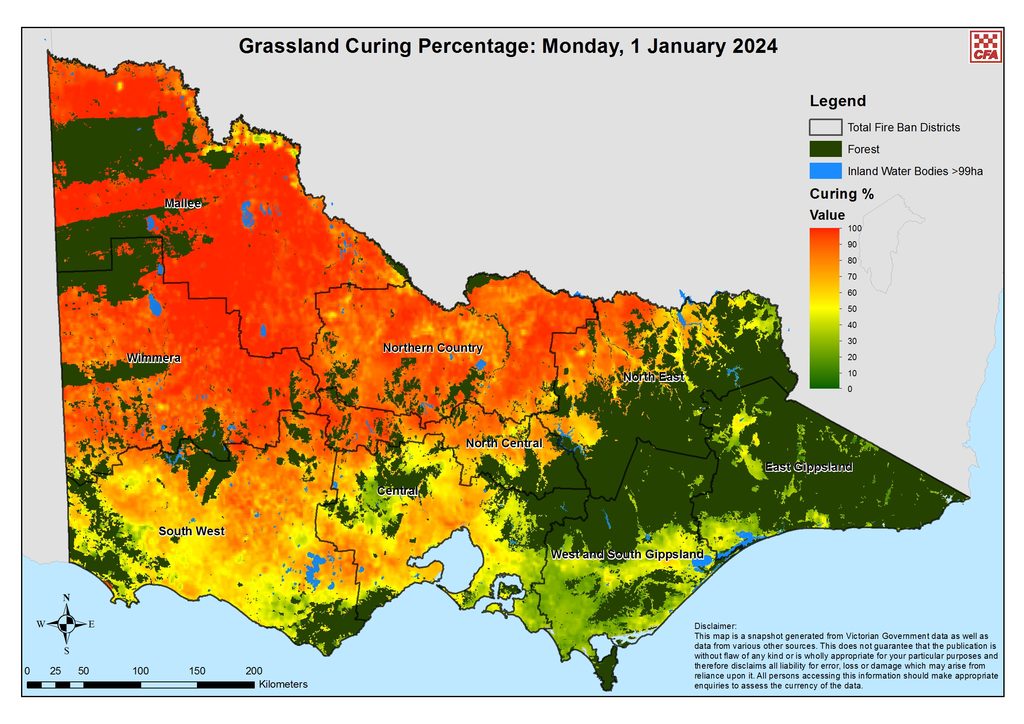CFA calls for help to determine grassfire risk
THE CFA is calling on Victorians to become citizen scientists and help contribute critical information about the state’s fire risk.
The 2023-24 fire season is expected to be hotter and drier than recent years, and the CFA says grassland curing observers play a vital role in collecting ground information.
This information us combined with satellite imagery to produce maps that show how dry the grass is across Victoria.
According to the map released on January 1, the Otways appear to have 0 per cent grass cured but the rest of the Geelong region is at 50 per cent or higher, with a large area east of Lake Corangamite and Lake Colac closer to 60 or 70 per cent.
CFA remote sensing analyst Dr Danielle Wright said CFA needed more observers trained to provide readings of grass curing.
“There are parts of the state where we really need more eyes on the ground like the North-East, the North-West and South-West where we have fewer observers participating.
“Our volunteer grassland observers are an incredibly valuable resource that helps to inform a lot of our decision-making over the fire season.
“We can’t rely on satellite imagery alone. It is the best performing model available to us, but it can overestimate and underestimate the curing levels.
“Across bare sand and soil, the model over-estimates curing. In areas of new growth from rainfall, the satellite sensor can pick up the green growth and underestimate curing.

“Observers can adjust the satellite readings which means we can provide more accurate information to inform decision making when it comes to fire risk over summer.”
Melissa Hughes is a volunteer with Wattle Glen Fire Brigade and is a grassland observer.
She said the online training module took about 30 minutes to complete and gave her everything she needed to become a citizen scientist.
“I love the data and the science that goes into this grassland observation. The course was so easy and CFA gives you great tools to support the role.
“This really is citizen science at its best, the information we observers gather has an immediate benefit to the community.
“I don’t just see grass any more when I am out on the road, I see so much more detail.
“It might be dry at the top but still green at the bottom, and I know exactly where it is in the curing process no matter where I am.”
Dr Wright said being a grassland curing observer was a great way to contribute to CFA and Victoria’s understanding of the landscape for this summer and beyond.
“Anyone who is interested in the role can participate, not just CFA volunteers. The readings from the observers will better help our fire behaviour models for this summer.”
For more information, head to cfa.vic.gov.au/grass or email [email protected]


















